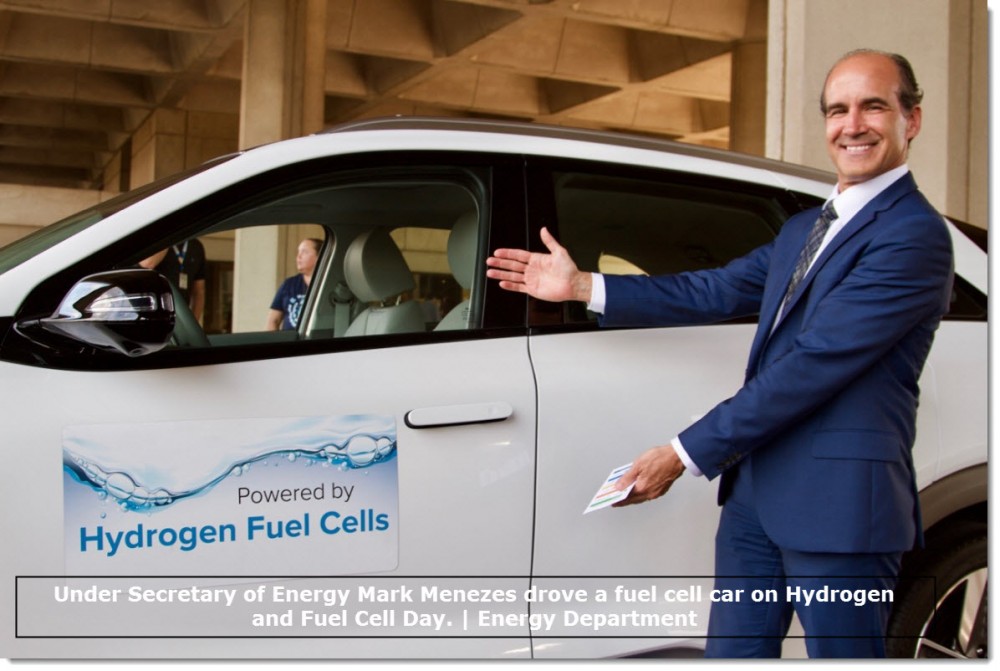
Aptly named for the atomic weight of hydrogen (1.008), Hydrogen and Fuel Cell Day took place earlier this month (10/08). The Energy Department, industry organizations, National Labs, and state and federal government agencies celebrated with a variety of communications activities and outreach events around the world. Here at DOE, we celebrated by hosting a ride and drive with two of the world’s very first commercially available fuel cell cars, one of which I had the pleasure of driving.
I learned firsthand that driving a fuel cell car is exactly the same as driving a traditional car. Get in, fasten your seat belt, push the start button, and step on the (gas) pedal! The only difference is that a fuel cell car has no ignition and uses hydrogen instead of gasoline, but is powered by a chemical reaction that produces only water and heat as byproducts. Fuel cell cars refuel in minutes at hydrogen stations and have a range of more than 300 miles.
But there’s more to hydrogen and fuel cells than just cars. Hydrogen is the world’s most abundant element and has the potential to unite all of our nation’s energy resources. A critical part of the Energy Department’s “all of the above” energy portfolio, hydrogen can be produced through diverse domestic resources like renewables, nuclear, and fossil energy. Hydrogen and fuel cells can also be used to power material handling equipment like forklifts or used as emergency backup generators for data centers or hospitals.
Our H2@Scale initiative brings together stakeholders and national labs to figure out how to provide affordable hydrogen production, transport, and storage to be used across multiple sectors like steel manufacturing, energy storage, and other transportation modes including truck, rail, and maritime. Hydrogen technologies can be coupled with nuclear power plants to generate an additional revenue stream. Many utilities are now considering integrating nuclear energy production with other industrial processes to optimize thermal and electrical energy production.
You can see we’ve been hard at work. DOE-funding has led to more than 730 U.S. patents and 30 technologies that have been further developed and commercialized by the private sector. With our support, stakeholders have decreased the cost of transportation fuel cells by 80% since 2002. We’ve quadrupled fuel cell life so you can now get 120,000 miles from one fuel cell.
As we continue or work here at DOE we’d like your input. We recently issued a Request for Information seeking stakeholder feedback on opportunities to enable high volume production and multi-sector use of hydrogen. Responses are due October 31, 2018 and we hope you to hear from you.
Read the most up to date Fuel Cell and Hydrogen Industry news at FuelCellsWorks




